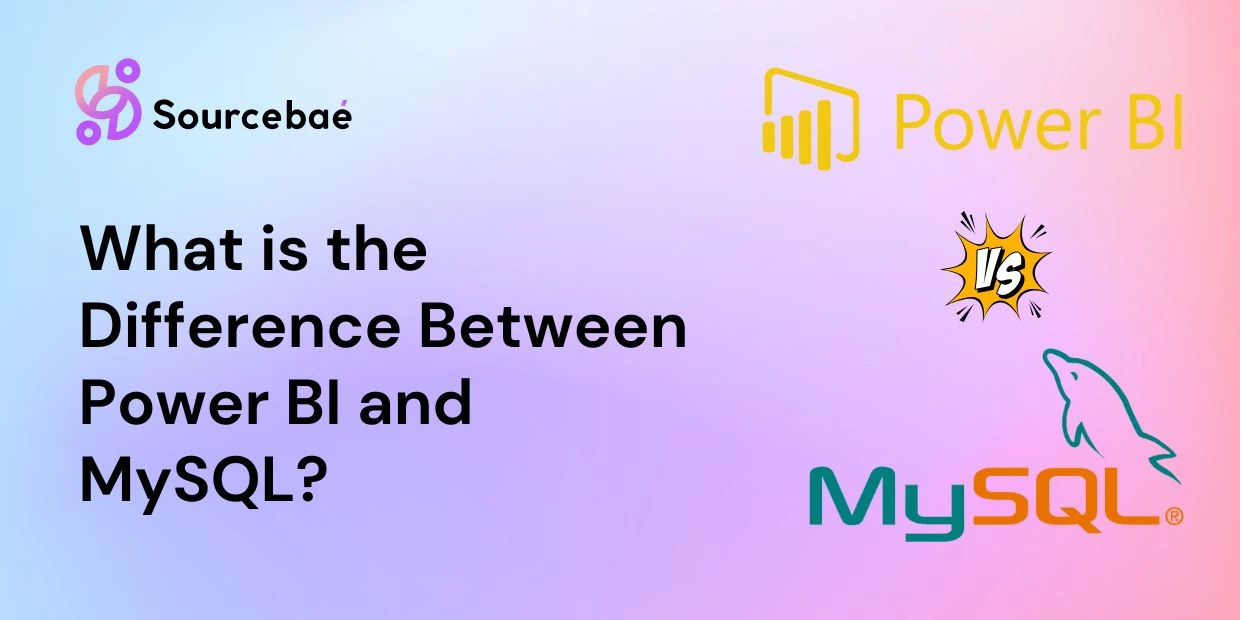In the ever-evolving world of data analytics and database management, two prominent tools have emerged as stalwarts: Power BI and MySQL. These tools serve distinct purposes, cater to different aspects of data manipulation, and are essential for professionals working in data-driven industries. If you’re looking to understand the fundamental disparities between Power BI and MySQL, you’ve come to the right place. In this comprehensive guide, we’ll delve into their differences, features, and best use cases, answering all your burning questions.
Understanding Power BI
Power BI Overview Power BI, developed by Microsoft, is a powerful business intelligence and data visualization tool. It allows users to connect to various data sources, transform data into meaningful insights, and create visually appealing reports and dashboards.
Key Features of Power BI
- Data Visualization: Power BI excels in creating interactive and visually appealing charts, graphs, and dashboards, making it easy for users to comprehend complex data.
- Data Transformation: It offers robust ETL (Extract, Transform, Load) capabilities, enabling users to clean, transform, and reshape data for analysis.
- Integration: Power BI seamlessly integrates with other Microsoft products, such as Excel, Azure, and SQL Server, enhancing its data connectivity and processing capabilities.
Best Use Cases for Power BI
- Business Reporting: Power BI is ideal for creating business reports, executive dashboards, and performance scorecards, helping organizations make data-driven decisions.
- Data Exploration: Analysts and data scientists use Power BI for exploring data, identifying trends, and uncovering insights that drive business growth.
- Real-time Monitoring: It can connect to live data streams, making it suitable for real-time monitoring and analysis.
Understanding MySQL
MySQL Overview MySQL, on the other hand, is an open-source relational database management system (RDBMS). It is known for its stability, reliability, and versatility in handling various types of data.
Key Features of MySQL
- Data Storage: MySQL excels in storing structured data, making it ideal for applications that require structured data storage and retrieval.
- Scalability: It offers excellent scalability, making it suitable for both small-scale and large-scale applications.
- Security: MySQL provides robust security features, ensuring the confidentiality and integrity of data.
Best Use Cases for MySQL
- Web Applications: MySQL is commonly used as the database backend for web applications, including content management systems (CMS) and e-commerce platforms.
- Data Warehousing: It can be used as part of a data warehousing solution for storing and managing historical data.
- Analytics: MySQL can support basic analytics and reporting, making it suitable for businesses with less complex analytical requirements.
What is the Difference Between Power BI and MySQL?
Now that we have a basic understanding of both Power BI and MySQL, let’s dive into the key differences that set them apart:
| Feature | Power BI | MySQL |
|---|---|---|
| Purpose | Data visualization and business intelligence | Relational database management system (RDBMS) |
| Data Types | Handles structured and semi-structured data | Primarily designed for structured data |
| Ease of Use | User-friendly with a focus on data visualization | Requires SQL knowledge for data manipulation |
| Real-time Data | Suitable for real-time data analysis | Supports real-time data but with configuration |
| Scalability | Designed for reports and dashboards; not suitable for very large datasets | Excellent scalability for data storage and retrieval |
| Data Transformation | Offers powerful data transformation and modeling tools | Limited data transformation capabilities |
| Cost | Licensing fees apply for premium features; free version available | Open-source and free to use |
Frequently Asked Questions
1. Can I use Power BI and MySQL together?
Yes, you can. Power BI can connect to MySQL databases to create reports and dashboards based on your MySQL data. It allows you to visualize and analyze your MySQL data effectively.
2. Which tool is better for real-time data analysis?
If real-time data analysis is a crucial requirement, Power BI is the preferred choice. It offers features that allow you to connect to live data streams and update your reports and dashboards in real time.
3. Is MySQL suitable for small businesses?
Yes, MySQL is an excellent choice for small businesses. It’s open-source, cost-effective, and capable of handling the data needs of small to medium-sized organizations.
4. Do I need programming skills to use MySQL?
While MySQL is more SQL-centric and may require some programming knowledge, there are user-friendly interfaces and tools available that make it accessible to users with varying levels of technical expertise.
5. Can Power BI be used for data warehousing?
Power BI is primarily designed for data visualization and business intelligence. While it can connect to various data sources, it may not be the best choice for data warehousing. You may want to consider other tools specifically designed for data warehousing.
6. Are there any alternatives to Power BI and MySQL?
Yes, there are several alternatives to both Power BI and MySQL, depending on your specific data analytics and database management needs. Some popular alternatives include Tableau, QlikView, PostgreSQL, and MongoDB.
Conclusion
In conclusion, the choice between Power BI and MySQL depends on your specific requirements and objectives. Power BI is a robust tool for data visualization and business intelligence, while MySQL excels in managing structured data and serving as a reliable database backend. Understanding the differences and assessing your needs will help you make an informed decision that aligns with your data-related goals.
Remember that these tools can also complement each other in certain scenarios, offering a holistic approach to data management and analysis. So, explore their capabilities, try them out, and leverage their strengths to harness the full potential of your data.






